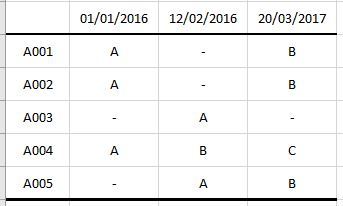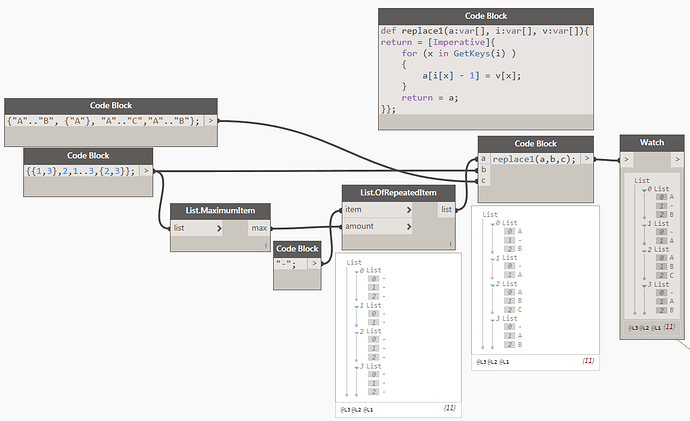Hi all,
I am building a graph to create a drawing transmittal:

The difficulty comes when I have to rearrange the data extrated from the sheets:
Here my two questions:
- How to add an element to a list to make sure each sublist has as many elements as revisions (in my example each sublist must have 3 elements)
- How do I change the position of an element in a sublist so it matches the Revision Sequence.
As usual, thanks a lot for your help.
Hi Pablo
I suggest using Dynamo to extract the data, then something with a PIVOT function- such as Excel to present it in this format.
You could probably come up with a solution in Dynamo, although it might not be pretty
Andrew
Hi Andrew, that is what I currently have 
I was wondering if I could achieve the same result directly from Dynamo but that additional step is adding more complexity that I can handle.
Can you sketch what your final result would look like?
Hi Salvatore,
The result would look like this:

Then I can write that List of Sublist in Excel so it’ll look as the first image of my post.
Thanks!
@Pablo_Perez_Valdivia Well, we always like a good challenge 
This is my solution in Python:
Rev=IN[0]
Ind=IN[1]
import sys
pyt_path = r'C:\Program Files (x86)\IronPython 2.7\Lib'
sys.path.append(pyt_path)
import itertools
def MapList(lst):
return map(lambda x:x-1, lst)
L=len(Rev)
MaxL=max([len(i) for i in Ind])
IndMinus1=[MapList(i) for i in Ind]
OUT=[]
for i in range(0,MaxL):
OUT.append('-')
OUT=list(itertools.chain.from_iterable(itertools.repeat(OUT, L)))
OUT=[OUT[x:x+MaxL] for x in xrange(0, len(OUT), MaxL)]
for index,i in enumerate(OUT):
for k,j in zip(Rev[index],IndMinus1[index]):
i[j]=k
1 Like
I think I’ve shown how to do recursive replacement with DS before, but can’t seem to find the example. You can try this:
def replace1(a:var[], i:var[], v:var[]){
return = [Imperative]{
for (x in GetKeys(i) )
{
a[i[x] - 1] = v[x];
}
return = a;
}};
4 Likes
Thanks Salvatore!
The more I see coding, the more I want lo learn.
Can you recommend me any guide,course,tutorial… to start learning Python?
Bravo @Dimitar_Venkov, so neat!
It works really well.
I’ll add soon a extra layer of complexity that I just come across.
Hi @Dimitar_Venkov,
I have tested your code in a real case where the Revisions Sequence aren’t consecutive numbers as follows:
We have just 3 Revision Sequence: 9, 12, 17. As these are numbers, when I apply your code, the result is not the desired: 5 sublist with 3 elements in each.
Would it be possible to renumber the Revision Sequence so it works with your code?
Thanks a lot Salvatore, I’m definitely going to start learning… I’m sure it’ll be a long journey.
SOLVED!!!
The Blue group renumbers the Revision Sequence with consecutive numbers and applies it to the Revision Sequence on sheets. Then I can use @Dimitar_Venkov’s code normally.
Again, thanks all for your help!
1 Like
Is my code working with your real case?
@Pablo_Perez_Valdivia Great! Sorry I just had a quick read to your post regarding the revision sequence.
My code wouldn’t work but it’ll needs some amendments.
That’s correct @salvatoredragotta, I couldn’t make your code work either with the real case.
Now I’m adding some BumbleBee nodes to pass the info to an Excel file, almost done 





